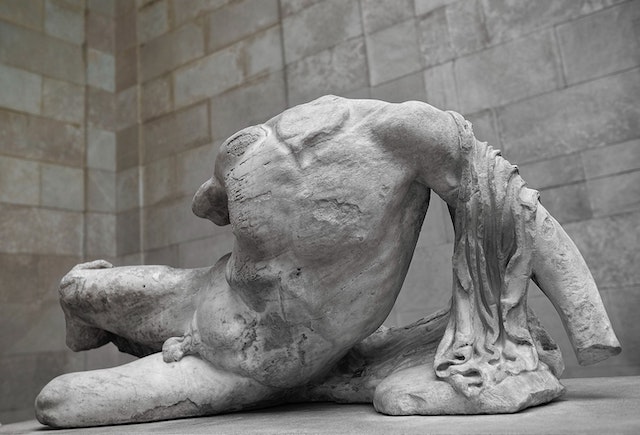Dr Carmel Casserley discusses how homeopathy can help
The liver is the powerhouse of the body. Its primary role is the synthesis of fuel components for use by other organs. Its function is to control carbohydrate metabolism, lipid (fatty acid) metabolism, protein metabolism and bile secretions. One of its most important roles is carbohydrate storage/metabolism that is the monitoring and stabilising of blood glucose levels. The liver produces glucose both from its own (glycogen) stores and from muscle lactate, as well as from fatty tissue. It also responds to a high blood glucose by increasing its uptake of glucose and depositing it in its storage mechanism as glycogen. When you have eaten, the liver stores fuel derived from glucose. When you haven’t eaten for a while, the liver senses this and increases the synthesis and export of glucose when blood glucose levels are low. (The pancreas also senses the fed state adjusting its insulin output accordingly.)
An important regulatory function of the liver in respect of digestion is the formation and secretion of bile. Wrong dietary intake over a prolonged period puts inordinate strain on liver function. The liver also regulates fatty acid synthesis, and contributes to steroid production. Alcoholic cirrhosis and drug-induced damage are not uncommon ailments nowadays. Trauma causing rupture/haematoma can be helped with Arnica in conjunction with orthodox treatment.
Reading the signs
Common portents of liver disorders are “indigestion” stomach “wind”, pain/discomfort under the right ribs and inability to digest fatty foods, loose stools and pale stools. I have had so many cases of IBS(Irritable Bowel Syndrome) that have cleared up finally when the treatment was directed at the liver and not just the bowel.
Morning nausea of pregnancy to me is not normal. So often as a young GP I reassured my patient that it was normal, only to find as they grew up or grew older that they had gall bladder problems. I now treat morning sickness very seriously and follow these patients post-natally in respect of liver digestion. One patient had toxaemia during pregnancy developing into jaundice, which was cured with Phosphorous 1m alternating with Sepia 1m. This lady responded after three days.
The homeopathic cure
Orthodox medicine is very useful in giving an assessment of more advanced disease. Even here homeopathic prescribing can achieve stunning, unexpected results. This was so in a patient who had chronic viral hepatitis and was taking large doses of cortisone (40mg a day initially, lowered to 30mg a day ongoing), and was cured over a two-month period on Phosphorous 30c twice a day for three days initially.
The patient felt somewhat better – less nauseous, less bloated. The Phosphorous was stopped for four days (allowing the body to respond). My rule to the patient is “when losing any good effect do it again but less often”. I therefore gave one Phosphorous 30c in the evening, morning and evening. Then I stopped and waited, this time for a further week.
This regimen was repeated over a month when I decided to prescribe Phosphorous 6c one a day for a month. The lower potency more often seems to be indicated when the cause is due to a toxic drug. This patient was completely cured. He reduced his own cortisone himself and finally came off it altogether. Many months later I gave him one Lycopodium 30c in the evening, morning and evening as a constitutional medicine and never saw him after that. Another case like this requiring a similar pattern of prescribing, arose with a dental worker who was cured using Aurum met 30c. He had specialised in gold fillings.
Liver damage
Damage to the liver can be due to inflammation due to infective agents causing, for example, hepatitis and liver abscess. This often responds rapidly to homeopathic Phosphorous (30c/1m) as well as Hepar sulph (200c). Medorrhinum (1m) – Hahnemann’s miasm – may be needed to finish the treatment.
An orthodox diagnosis is useful and often essential. It gives an indication of how advanced the disease is and of other organs likely to be affected. From the point of homeopathic prescribing, however, this is purely of academic interest as the homeopath relies on the signs and symptoms especially related to the required medicine and also the constitutional make-up of the patient and more importantly the change in that constitutional make-up. By constitution I mean, how his/her physiology works for him/her.
Homeopathy recognises the ailment and chooses the required medicine but always (or should always) ask what was it in the constitution, which predisposed this person to get this ailment in the first place. Hahnemann stressed the predisposition (miasm) to illness as much as the illness itself.
In practice I like to see where the person is coming from, where he is now and more importantly where he is going – health-wise. Thus the past history is very important. A good example of this is the gall bladder stone/colic of middle-aged women. It amazes me how many had nausea/morning sickness during pregnancy. I have also had many patients with various digestive/bowel problems which cleared up when an old hepatitis infection was treated (mostly with Phosphorous 30c).
In general practice the commonest liver ailments for me have been gall bladder ailments, for example stones, spasm of biliary duct and also hormonal changes. Except in hepatitis, liver ailments are normally of slow onset. Even gall stones, which may seem of acute onset, may have been developing over quite some time.
Dietary prevention
Much controversy has taken place over fat intake. High-density fats (polyunsaturates) help to emulsify our food. Low-density fats (animal fats) have been blamed for arteriosclerosis (hardening of the arteries) and gall stones. The argument still continues, there being older people who have broken all the rules and still have a healthy existence. This is where the constitutional make-up of the person becomes interesting. By and large the Mediterranean diet of fruit, vegetables and olive oil is advised.
The commonest and probably earliest symptom of liver problem is “indigestion”. It can have many causes – high stomach acid, hiatus hernia – but usually it can be the start of a gall bladder problem. The gall bladder is attached to the duodenum by a narrow duct, which has a valve at the duodenal outlet. When the contents of the stomach enter the duodenum, the gall bladder contracts and releases bile (gall) into the duodenum. Here it emulsifies the food, which is now in the correct condition to travel around the intestine and be absorbed. If there is spasm of the bile duct there will be swelling of the gall bladder and bile cannot get out. It will swell and cause enormous discomfort and pain. The food will not be emulsified and will travel on in lumpy uneven form, often pale in colour due to an absence of bile in the intestinal contents.
As stated earlier, if the role of the liver is the synthesis for fuel for other organs, then the whole body must be investigated for other organ involvement especially kidneys. Hahnemann laid enormous emphasis on whole body involvement in disease. I think this is one area where the homeopathic approach has so much to offer, especially in prevention.
The most common remedies used
In early disease:
Indigestion/right-sided
-
- Chelidonium 6c – one three times a day for up to three weeks. Stop treatment if bowels loosen. Stools should be dark and pass easily – pale stools show bile obstruction.
- Mag phos 30c -one twice a day after using Chelidonium. If pain is subacute/acute use
- Mag phos 30c one every 10 minutes for three to four doses. Stop. Wait. This can be repeated as required. Mag phos is specifically a muscle relaxant. Quite often there are other signs of muscle tension (for example cramps) in other parts of the body.
- Lycopodium 30c -being a right-sided remedy is almost specific for liver and kidney clearance. There is sometimes a raised diastolic (lower level) blood pressure and patients are chilly – tired – windy – constipated – bloated after meals. They often keep going for a long time and become chronic sufferers before doing anything about themselves.
Pain – discomfort/ left-sided
-
- Cardus marianus -one three times a day for up to two weeks.
- Nux vomica 30c -urge to move bowels, which passes off – chilly – irritable “leave me alone!”
- Phosphorous 30c -long narrow stools – can be pale – a highly-strung patient – pale (hint of yellow) skin.
- Sepia 30c/1m -patient grey and worn out – hormonal hot flushes – emotionally flat nauseous.
- Lachesis 30c -although most often regarded as a left sided remedy, it is often indicated in portal congestion – shown by a sensation of feeling terrible on waking or after nodding off during the day. This is due to venous congestion that affects the liver circulation on lying down for any length of time. Quite often it is needed if other remedies fail to work.
- Sulphur -Sulphur persons are often big eaters and drinkers. Liver problems can be of alcoholic origin. They find dietary regimes next to impossible. When treated with homeopathic Sulphur they can become less warm-bodied, less loose-bowelled and often constipated. Here they need Nux vomica. After this they can do quite well on some herbal remedy.
Drug damage
-
- Opium 1m and/or Nux vomica 30c can be used alongside orthodox medicine.
Other therapies
-
- Herbal remedies need skilful prescribing by a qualified herbalist and some are now under observation for liver cancer.
- Some Hatha yoga exercises are very useful in helping venous drainage of the liver.







